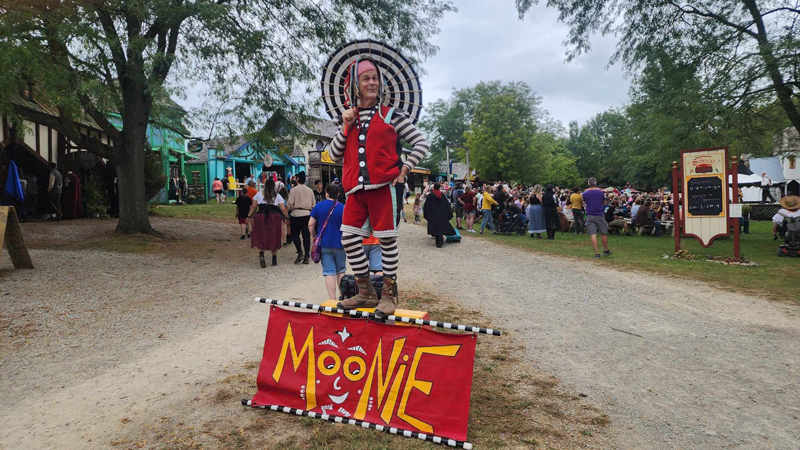A (Very) Brief History of Mimes
When it comes to mimes, (and clowns in general), we often see them portrayed in media with a sense of trepidation or even outright malice without any real explanation as to why. We tend to think of the mime in its French incarnation, with a monochromatic aesthetic a la Jean Gaspard Deburau and Marcel Marceau. In the more modern era, we might be more familiar with the pantomime performances of Charlie Chaplin, the Blue Man Group, and Mr. Bean. Their exaggerated movements and farcical storytelling are entrancing, challenging the audience’s brain to work out the meaning of what is being demonstrated. The mime utilizes a mastery of expression, interaction, and theatrics to bring the audience out of its shell, turning the spectator into a part of the show. Some people welcome the chance to participate. Others…not so much. But one way or the other, mimes have been a part of performance history for millennia.
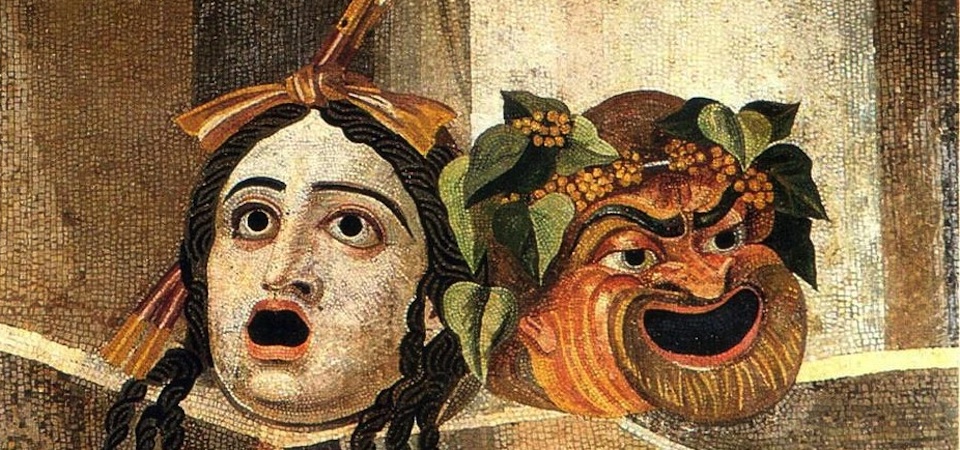

As with so much of the performing arts, pantomime finds its origins in ancient Greece (800 BCE – 149 BCE), where a single performer would change masks, costumes, and gestures in order to portray all the roles. Later it would split into tragic and comedic schools of practice, creating a more focused dynamic for the performance artists. Later, during the Roman Empire (625 BC – 476 AD), mimes underwent a tumultuous existence depending solely upon whether or not the Emperor at the time approved of them. However, the art form continued to develop into more refined characters such as the stooge, the gigolo, the old hag, or the incompetent slave. The mime was also one of the few areas of the ancient theater in which women were active participants.
After the collapse of the Roman Empire, mimes underwent a transformative experience, mostly due to the advent of the Christian church. During the Roman Empire, mimes were often utilized to portray lewd or licentious acts, something which early Christians found abominable and often condemned as immoral. It didn’t help that, in an application consistent with most comedy stylings, mimes often used subversive storytelling to criticize authority and mock those with status. In order to survive, theater troupes of the day began to focus on ‘morality plays’ that exalted modern sensibilities and made them more acceptable to the current religious power structure.
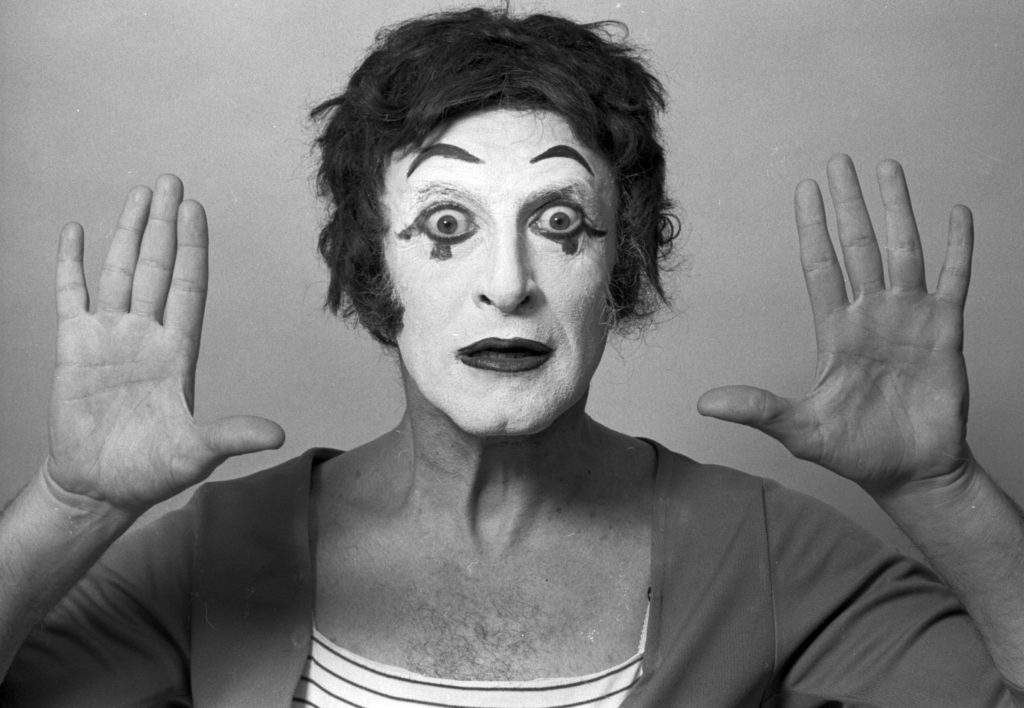

By the 1800s, comedy became the central focus, along with a shift in which the mime often portrayed the relatable every man. Tragic, lovesick, often oblivious, or the victim of their surroundings, the mime gave people an excuse to laugh at the realities of being human in a society. They were lovable, and flawed, often expressing a sense of poetry and common wisdom that delighted audiences of the day.
In the modern era, mimes have continued to evolve their performance styles without ever forgetting their roots. From comedic performance art to tongue-in-cheek adult humor, musical talent to the eternal struggle of humanity against it’s own nature, perhaps it’s time we consider that a mime is a terrible thing to waste.
An Interview with MooNiE the Magnificent
How It Started…
Phillip, a.k.a; MooNiE the Magnificent: I’ve been performing all my life since grad school and as an actor. I have a B.S. in Acting from Illinois State University. Right after school ended I started doing the original mud show, The Sturdy Beggars Mud Show. That’s where I got my name MooNiE. About four years later I started doing my own show, MooNiE the Magnif’Cent: Juggler, Ropwalker, FooLiSh MorTaL! MooNiE developed one show at a time. That’s how we do it, hopefully making each show better and better. My early inspirations were Avner the Eccentric, Danny Lord, and Arsene as well as the Mud Show. I started doing what I do as a skilled novice and then the audience tells me what works and what doesn’t. The audience is my director.
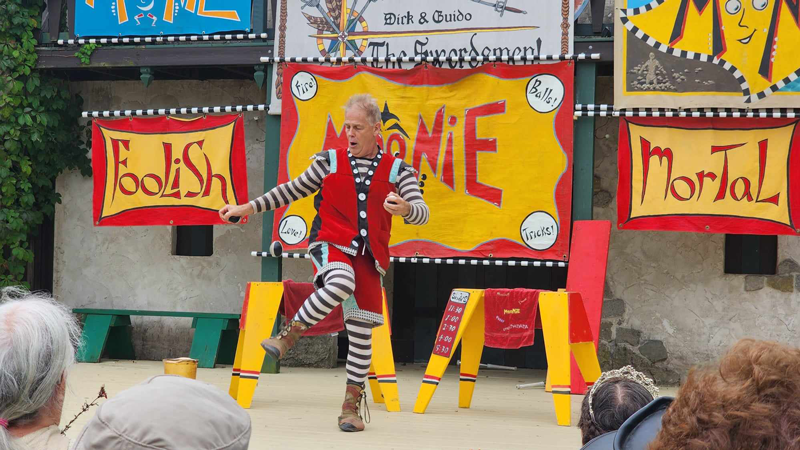

I have also had an acting career this whole time. I’m a proud member of Actors Equity and SAG-AFTRA, the unions that represent professional actors. Along the way, I have had many roles in great theatres around the country as well as roles on network television and film. I have been training and learning about all of the different kinds of performance all my life. I learned each of my skills before I started doing them in a show so that when I did any of them I would be ready. I’m not learning how to do a skill during a show.
Why Doesn’t MooNiE Talk?
Phillip: I stopped talking because I didn’t know what to say and because I felt it was easier to not speak. If I focused only on what my body was doing in space rather than what I was saying I realized I could be more specific with my movements, which tell a story, and that guides us all to the punchline. As for when I talk, I make the call on instinct at any given moment. I have learned to trust my instinct because I have to make decisions while in motion. The element of surprise is so powerful. I will speak in order to use that power of surprise. It’s like a reset. It’s my show. I can make the rules. Early on I only said “Don’t Screw Up!”, it has always been in the show. It was my biggest laugh. As the years went by, I realized that I could get that punch of energy anytime I wanted as long as I didn’t overuse it. The downside is “Don’t Screw Up” lost its power. It was a trade-off. I can’t be sure an audience gets any single point I’m making but after close to 11,000 shows I’m pretty sure when they do, and when they don’t, I know that too.
The Art of the Audience
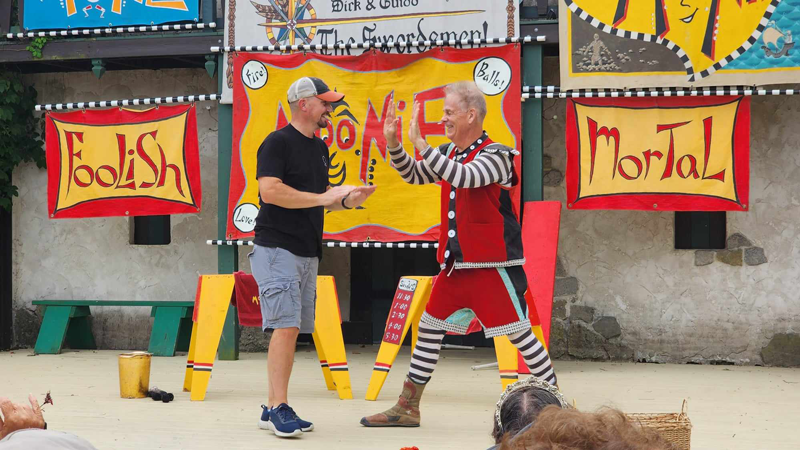

Phillip: A long time ago I figured out that my job is not making an audience participant do the one thing I need them to do. My job is to partner with what they actually do. If they don’t do what I ask then I ask again. Then again. If after that, if they just don’t get it, then they are probably not going to get much of what I will ask of them and I will bring them back to their seat and get someone else. If I ask them to do something and they do something different than 99 out of 100 people do then I will go with that because it’s usually funny. People don’t often go off-script. When they do go off, if it makes sense, let’s go have fun! If it doesn’t make sense I try to get them redirected back on track. It’s all a give and take. I can’t let them go completely rogue simply because there is a time issue. There is another show after me. I can never forget that. If I take more time with one section of the show than I usually do, then I have to make it up elsewhere.
Phillip: I want my audiences to feel that the entertainment they just participated in was worth the price of admission. If it happens with me along with the other shows, booths, food, and atmosphere, then the faire will feel like such a deal they will want to come back multiple times a year. That’s how you build an audience. Since I am a clown, laughter is a desired response. But mostly I want them to be connected to me. If the audience and I are connected in the “story” of what I am doing and they are following, then they will be willing to follow me wherever we find ourselves. I call that being inside the performance. I want everyone inside. Hopefully, no one is outside with separate judgment and commentary inside their heads. That connection inside the performance brings laughter, a deep sense of belonging, happiness, and gratitude. I want them to leave the show with all of those things living in them as a physical sensation. Therefore I feel desire when I see row after row of people laughing, an active desire to go even deeper, as deep and as far as we can go in the short time we have. When people come up and tell me how much they laughed, that they were in pain from laughing so hard, that is what it’s all about. As for what I wish people would understand about what I do is that we are doing it together. If it’s just me, we didn’t get it done. And that’s when I fight harder for it.
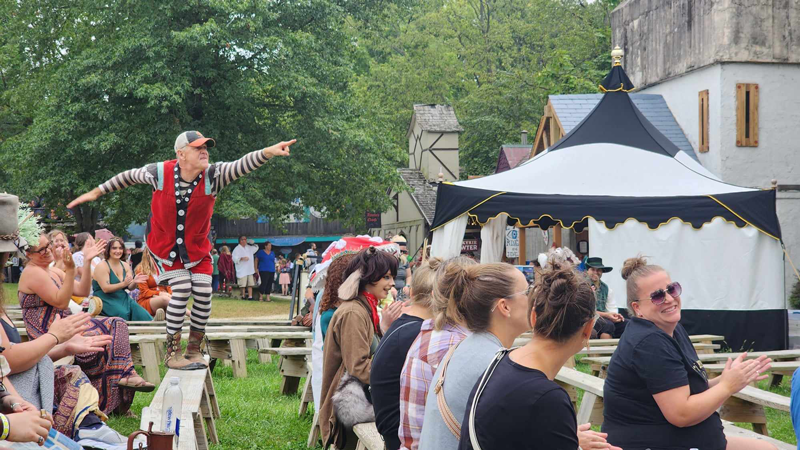

Phillip: The most rewarding aspect of this life is developing relationships with my audience. I want them to know I care about them. I believe they feel and experience that even if it is only a feeling they have. My extreme level of commitment to each moment in every show is my effort to make every moment count as much as possible. One of the things that I love about this job is I get to interact with the audience directly during and after the show. It happens after every show. In the professional “legit” theatre that rarely happens. You take off your costume, makeup, get dressed, and come out to an empty lobby. Maybe you have a friend at the show. During the performance of a play, and certainly during a shoot for an episodic TV drama or sitcom, it’s between the actors and the crew. In a play, the audience is like a separate entity that you interact with indirectly. In my show it’s direct interaction. Most theatre actors have little experience with it and are often frightened by it but I love it. As for the last question, the advice I would give to someone who wants to live this life is don’t choose to do something, singing, juggling, sword fighting, acrobatics, because you think the audience will like it, choose something that you inherently love to do because you will be doing it a whole lot if you are successful in this profession.
How It’s Going…
Phillip: I have been doing this for a very long time. I started at age 26. I’m 59. I don’t see adding too many things but my body is aging. So we will see. I started doing a verbal show called MooNiE Tales. It is my favorite show now. When that one is really on, it is exhilarating and the audience eats it up. That will likely be the future.
The most difficult part of the job is the travel and being away from my family. My family doesn’t go on the road with me. They lead a very normal life. I fly or drive back and forth to be home each week and have been doing that for almost 3 decades. During the pandemic, I was home with my wife and my three kids for 11 months straight. That was by far the record amount of time we were together. It was wonderful.


I keep coming back to Ohio because the audiences are finally beginning to find me. It takes time, five years at least, and I’m very grateful that it seems to be happening. I also have great respect for the way I have been welcomed and how this show is managed and owned. They want it to thrive and grow, and from what I’ve seen they have a great bead on how to do it. I want to be a part of that.
